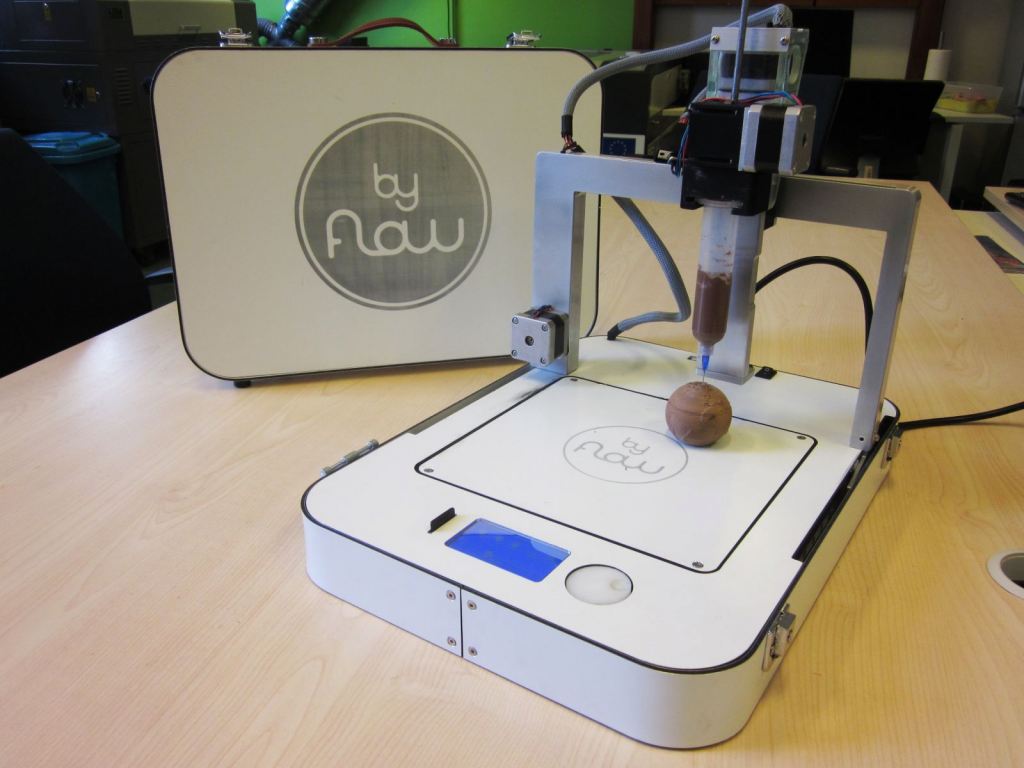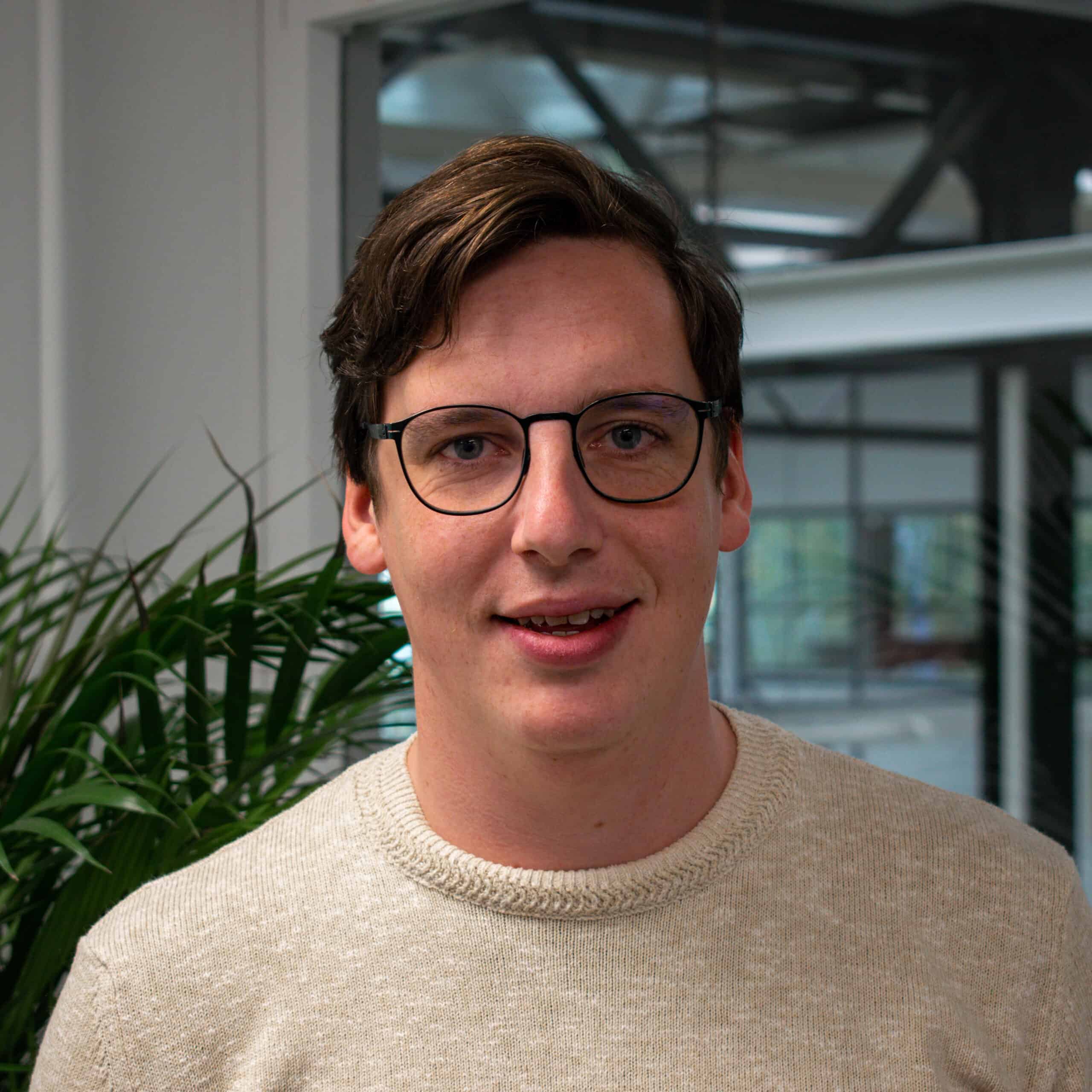
Initiated by Innovation Origins and High Tech Campus, the 10 most promising startups-to-watch from the Brainport Eindhoven region have been announced for the fifth consecutive year. On June 27th they received a Gerard & Anton Award. The winning companies are highlighted one by one in an interview. Today part 1; byFlow and 3D printing of food. read the whole series here.
Name: Nina & Floris Hoff
Startup: byFlow
Year of establishment startup: 2015
What is the goal of your business?
“Developing and selling 3D Food Print technology that allows professionals to create personalized shapes, textures and flavours with fresh or otherwise discarded ingredients.”
How did the idea come about for your startup?
“Inadvertently. Out of frustration with the 3D printers during the time that 3D printing was brought to the ‘makers’. Printers broke down, were complexly built and could only be used by professionals or very patient people. Floris studied industrial product design, did an internship at the 3D Food Printing department of TNO and on weekends he was paid to repair printers at his father’s company (a FabLab) so that they would work again for a few days. This had to change; it had to be more accessible and easier, more broadly applicable and more intelligent. Within a month, the first prototype was built, a multi-material 3D printer that allowed you to print more than ten different materials, and then in a suitcase so you could always take your printer anywhere you went. The interest that followed in the following year as Floris and his printer were dragged by his father all over Europe, ensured in 2015 that father Frits and son Floris decided that it was worthwhile to cash in on all their investments and bring a printer to the market.”
Has there ever been a change of focus, a pivot? Can you tell us something about the cause and the result?
“Yes, a great one. In 2015, we were still firmly convinced that multi-material printing would be a breakthrough for the prototyping market, engineering companies, schools and the medical industry. Because not only did you no longer have the frustration that your printer always jammed, you were now also able to change material very easily, and thus achieve an end product much faster. They didn’t understand, however, how can you print silicone and ceramics first and then plastics with the same device? And all this in high quality. Here we found out through our 3D Pop-Up-Restaurant. For us it’s a logical way to bring a multi-material product to the attention; your chair made of plastics, your ceramic plate and your food from a Michelin Chef, but all from a single printer. The world press fell over us, from the New York Times and Forbes to Turkish, Canadian, Taiwanese, Indian and Dutch television and blogs. Some of our movies about this Restaurant got 15 million views on social media, but it didn’t generate any sales. All this took place in 2016. At the beginning of 2017, we closed a month. We had collected an investment, built up a team, a total redesign of the product which allowed us to scale up, but no sales. With the team, we looked at all the news items, read all the reactions on social media, talked to our customers, and conducted a market study with our advisor Paul. In the summer of 2017, we moved from a multi-material printer to a 3D Food Printer. The result: the number 1 in 3D Food Printing, an unequivocal story, faster growth and sales in the Food Industry; large caterers, bakeries, restaurants, care institutions and education. Beautiful collaborations with Top Chefs as ambassadors, one will even open its own restaurant with the byFlow printers and larger collaborations with Food Multinationals in September. Oh, and the Deputy Prime Minister of the Netherlands twittered about us and a customer of us yesterday, carrots from the 3D Food printer for the elderly who have problems chewing and swallowing.”
I’m sure there was a moment when you couldn’t see it all anymore. Can you describe that moment?
“Several times. We are a rather unique startup because we started it with father, son and daughter. That alone has put us several times in front of the question: “What’s going for; family or business? But I think that our pivot has been one of our worst moments, almost no money in the bank, a whole team around you expecting salary, no customers, pressure from investors, a market that does not yet exist and meanwhile expectations from outside (the press was constantly knocking on our door), as a family with hardly any business knowledge do not know how to handle it. It was a difficult time, with little sleep, a lot of heated discussions and possible decisions. Luckily two very important people stood next to us, mothers took care of the rest of the family by keeping the administration neatly in order and asking questions like: “look at it from daddy’s perspective or look at it from the “youthful” perspective. She has always told us that, in the end, the family is always more important than money. The other is Paul, with his business experience he had experienced such situations before and he could prepare and guide us, which has brought a lot of peace. Now we have heard a good accountant and as a family we know exactly what we have in common, the business is growing!”
Where will you be with your company in 5 years’ time?
“Then we’ll still be the number one in 3D Food Printing, and we’ll be developing food industry machines that provide personalised production of healthy food, always thinking about how our technology can be used to reduce food waste.”
What does Eindhoven mean for your company? For yourself?
“Eindhoven has brought us a network, from the manufacturing industry to people who have helped us to get further on the map. Moreover, there is always something bubbling, it is an exciting environment, with crazy hidden places and powerful industrial spaces. It helps to ensure the growth of our company.”
What is the startup climate in Eindhoven like? Do you feel part of it? If so, how is this to be seen?
“Well. In HighTechXL Plaza it’s a buzz of startups, we walk in together and ask each other questions. The High Tech Campus itself now knows how to help startups in reach.”
At what point could the Eindhoven startup ecosystem improve?
“Developing a product is one thing, but how do you make that product (scalable), how do you think about your margins, how do you ensure rapid scale-up and how do you do your sales? There are so many successful medium-sized and large companies in the region, let the startups connect with these companies and connect them with mentors who can coach them in those very places. Oh, and on a personal note: more women really need to be included, also in the startup ecosystem. Nina travels every day from Amsterdam to Eindhoven, and in Amsterdam that ‘women-entrepreneur climate’ really lives much more. Give women a stage and let’s all go looking for the female Steve Jobs and Elon Musk. Because these women will also contribute to the startup ecosystem, the same competences and charms!”


